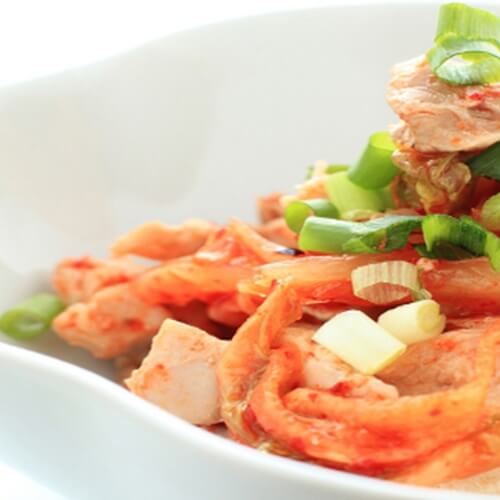An Introduction To Fusion Cooking

Dating back to the 1980s, fusion cuisine is the work of several pioneering chefs who sought to marry the best practices and most beloved ingredients of various global culinary traditions. More recently, as the Internet expands global connections, this food-based exploration blazes ahead at new speeds, U.K. source The Telegraph notes, leading to a marriage of methods previously occupying separate continents. Here are just a few of these groundbreaking fusion styles:
Pacific Rim
In his book “Why We Eat What We Eat,” journalist Raymond Sokolov notes that Pacific Rim cuisine came about because French and Japanese cuisine shared a common visual aesthetic. As such, many of the ingredients used are as visually pleasing as they are tasty. That includes wasabi, the green, horseradish-like paste that is as much a condiment as it is artwork, and agar agar, a jelly-like substance suited for decoration. Pacific Rim recipes regularly use basil, annatto seed (perfect for seafood recipes) and cardamom, a spice perfect for rice dishes or sugary desserts alike. These recipes are often based around seafood, but with interesting, Parisian-inspired twists. The Pacific Rim salmon features Japanese flavorings like soy sauce and wasabi augmented with honey and parsley, resulting in a unique flavor panel. The Pacific Rim Caesar salad takes the robust flavors of Parmesan and romaine lettuce and infuses the zest of chili powder.
California cuisine
Despite its name, California cuisine has a decidedly worldly bent. As the Los Angeles Times notes, it was born in the 1960s as a reaction to continental cuisine, an approach by restaurants to use canned goods. California cuisine emphasizes incorporating locally grown ingredients into foreign dishes, including those from Japan, Italy, Mexico and Korea, among others. As an extension, California cuisine features a slew of unique takes on recipes, all united by a sense of interconnectedness. One early adopter, Wolfgang Puck, applied the concepts to pizza, resulting in what’s commonly referred to as California-style pizza. From poached eggs to toasted broccoli and ricotta cheese to Thai chicken, the California style exudes an anything-goes mentality. Because of their ease and versatility, salads are another popular choice. Favorites include the Chinese chicken salad, which combines lettuce, wontons and chicken breast, and the quinoa salad, a medley of the South American grain alongside cucumbers, onions and tomatoes.
Indian fusion
For German chef Olaf Niemeier, Indian food is one of the most versatile traditions on the planet. In an interview with Notch magazine, he described using roasted spices on everything from Chinese lunch plates to a simple spaghetti dish. It appears as if other chefs across the world agree, as Indian fusion has picked up momentum in recent years. In the most basic sense, chefs are simply applying the various spices and ingredients of traditional Indian to a host of other delicacies. That includes tandoori masala macaroni and cheese, in which the savory spice adds a bit of kick to the comfort food standby, and the Indian burrito, which sees beans, beef/chicken and cheese swapped out for ingredients like spinach and chickpeas.
For more on fusion styles, try taking a course in your culinary academy. These sessions will help instill the sense of wonder and boundary-pushing techniques required for fusion cooking.


